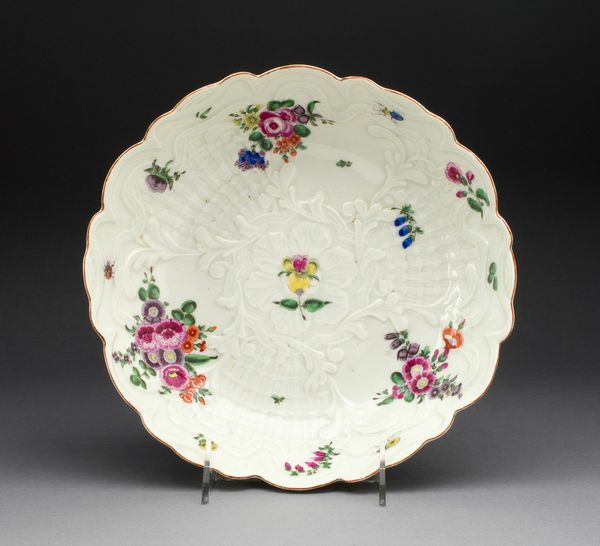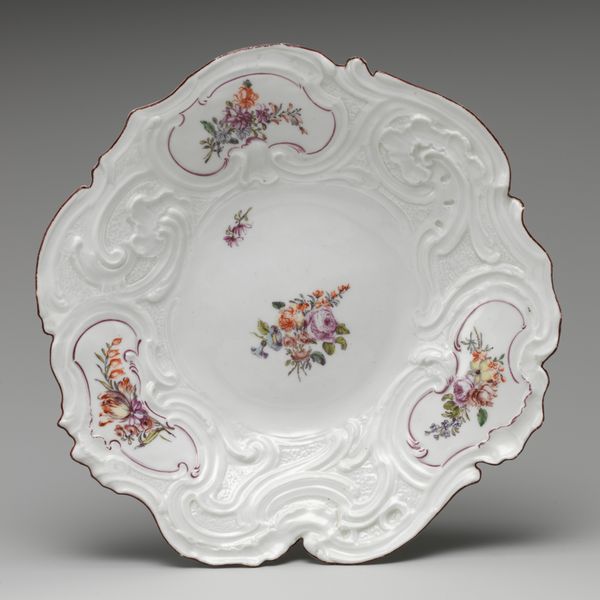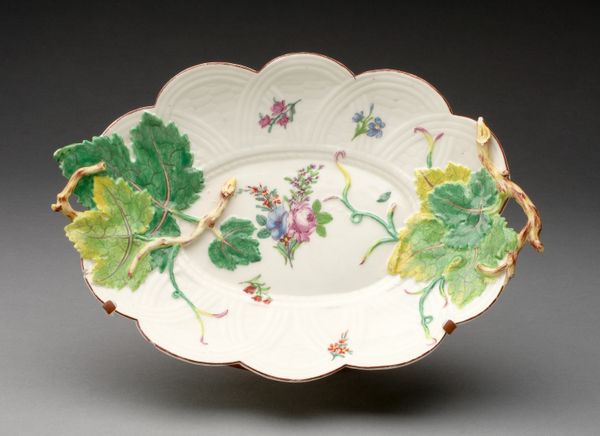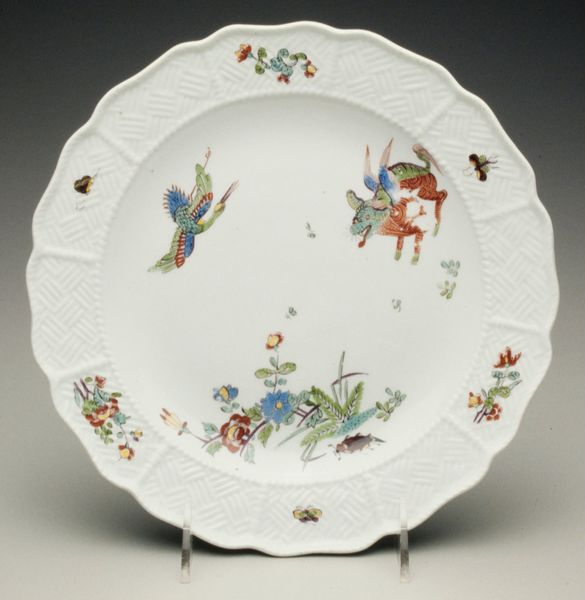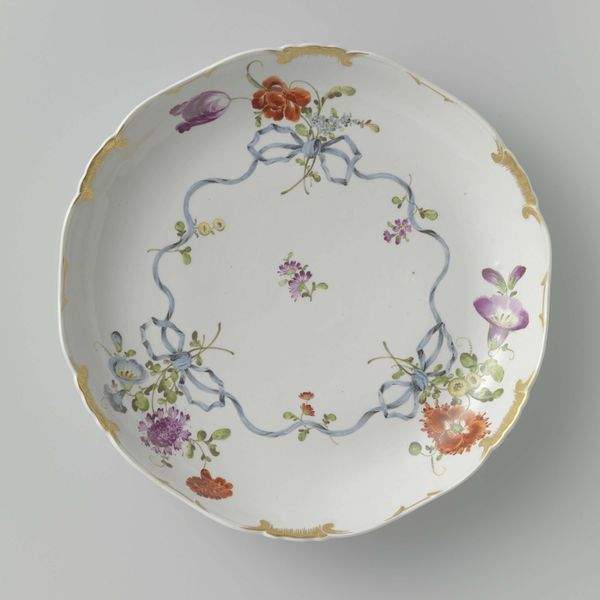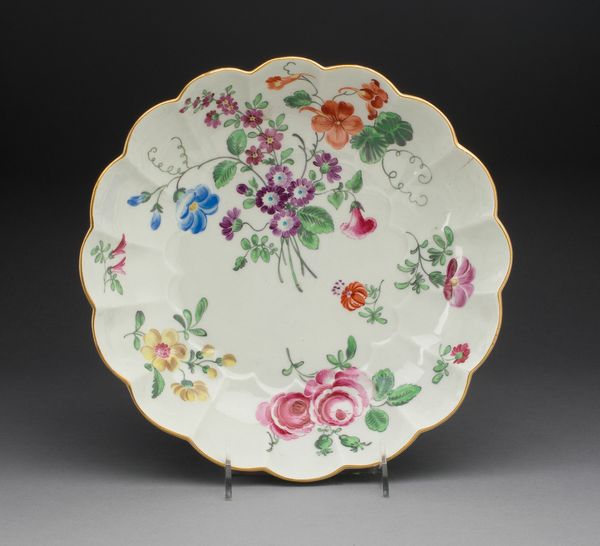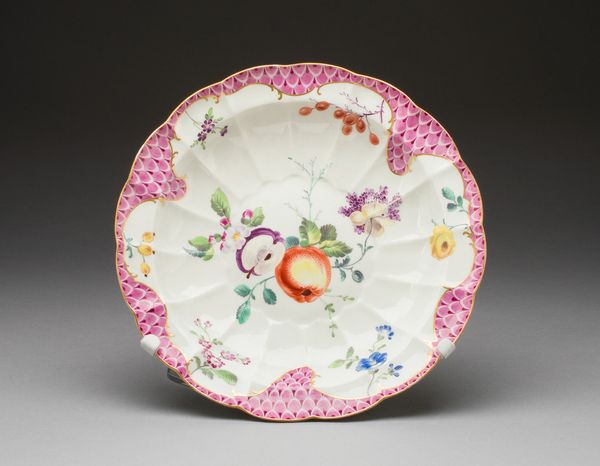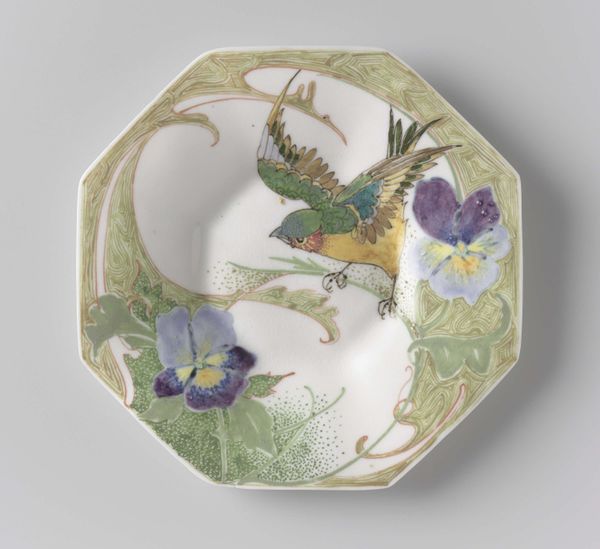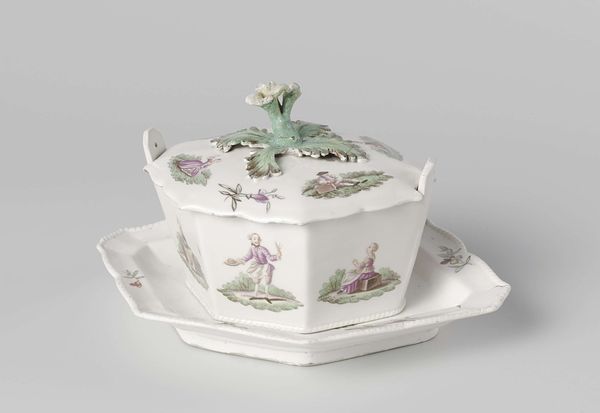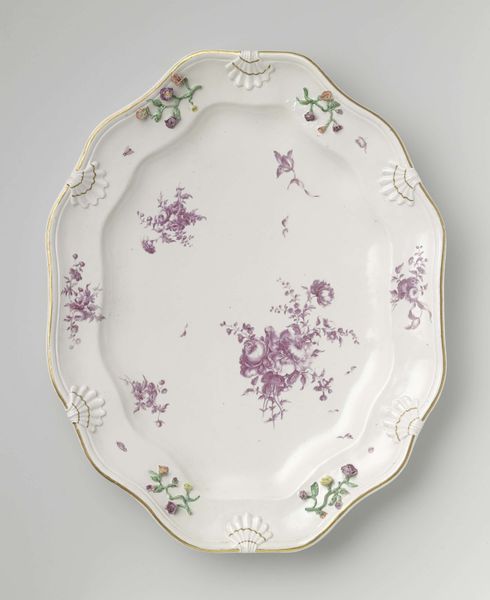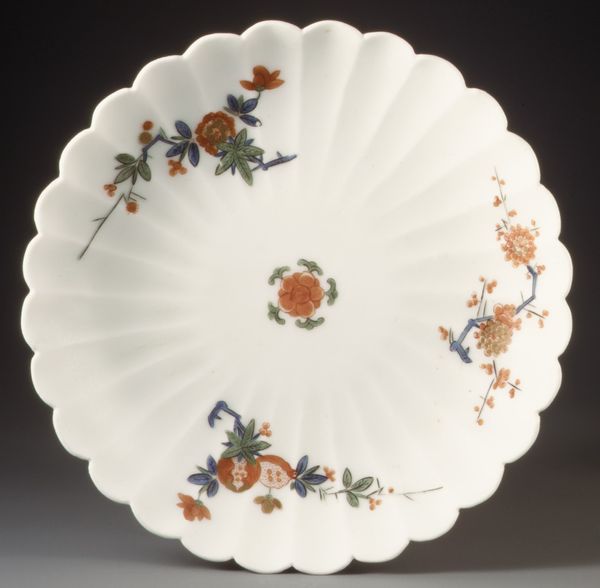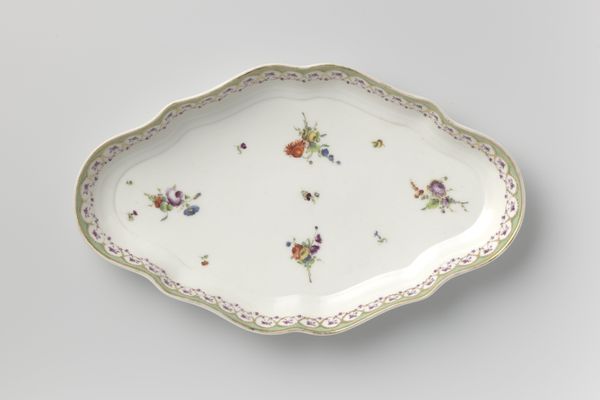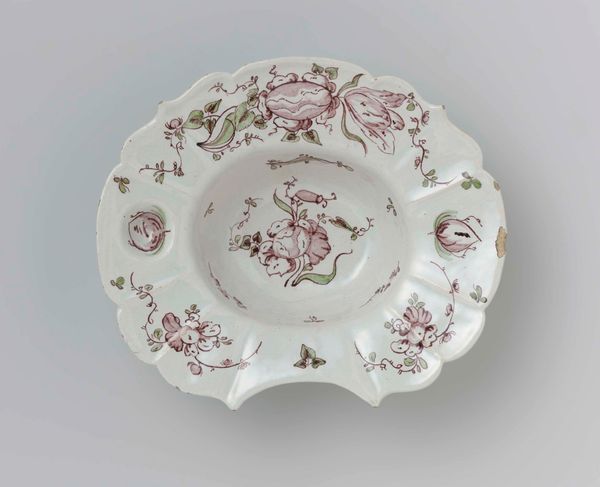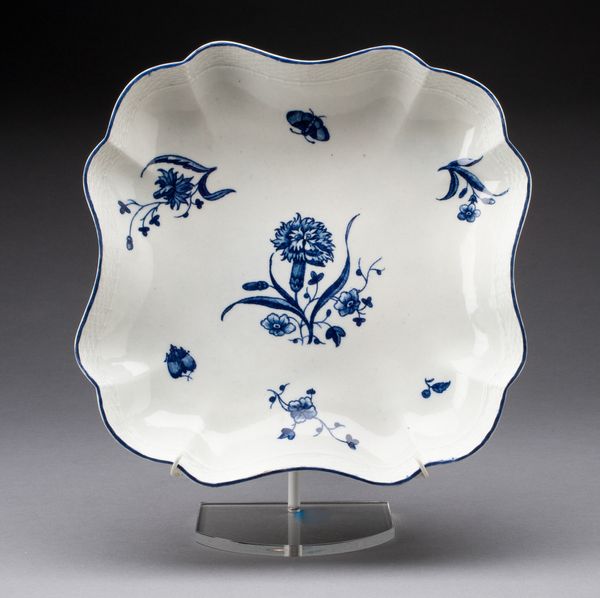
ceramic, porcelain, watercolor
#
ceramic
#
flower
#
porcelain
#
watercolor
#
ceramic
#
decorative-art
Dimensions: Overall: 1/16 × 9 1/8 × 9 1/8 in. (0.2 × 23.2 × 23.2 cm)
Copyright: Public Domain
Editor: This delicate porcelain dish by Haviland & Co., created between 1875 and 1885, showcases a subtle floral design rendered in watercolor. It’s elegant but almost feels... restrained? What's your take on this piece? Curator: The dish offers a fascinating glimpse into the gendered world of 19th-century artistic production and consumption. Consider the context: porcelain painting was often seen as a 'suitable' artistic pursuit for women of a certain class. Editor: So, less about personal expression, and more about societal expectations? Curator: Precisely. These 'decorative arts' were deemed less threatening to the established patriarchal order than, say, oil painting or sculpture. And the floral motifs themselves – what do they evoke for you? Editor: Beauty, definitely. But maybe also fragility? These flowers are very delicate. Curator: And who traditionally cultivated and appreciated flowers in that era? Think about the limited roles assigned to women – kept like prized possessions and often reduced to beauty objects. Now, consider the very act of creating beauty in the domestic sphere. It almost transforms from a subservient art form into a site of subtle resistance, wouldn't you say? Editor: I hadn't considered it that way. So, it's more than just a pretty dish. Curator: Absolutely. These objects, though seemingly innocuous, reflect the complex social dynamics of the time and offer insights into the lives and limited opportunities afforded to women. And let's not overlook the quiet dignity it represents – artistic endeavor carved out from domestic labor. Editor: It really gives you a whole new perspective. I guess that’s the real beauty of understanding the context around a piece. Curator: Indeed. The act of interrogation provides greater insight and deepens one’s knowledge, particularly in historical frameworks of cultural constraint and inequality.
Comments
No comments
Be the first to comment and join the conversation on the ultimate creative platform.
